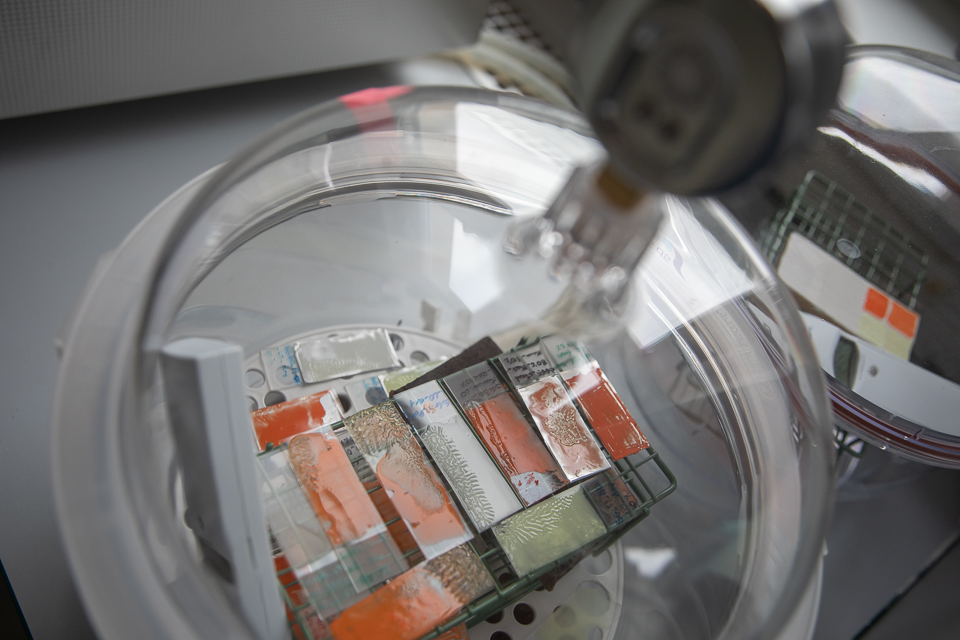It may still come as a surprise to numerous viewers that the current colour appearance of historical paintings is very frequently not the one originally intended. This is not only due to later interventions, but also to the fact that inorganic and organic components of the paint degrade and change over time as a result of a number of interactions (with moisture, light, salts, but also with each other). The aim of the experimental research in ALMA is not only to describe the nature of these changes and thus to virtually reconstruct the original colour, but also to understand the causes and mechanisms of these undesirable chemical processes. This understanding then leads to improvement in care, both during the storage and exhibition, and during the restoration of paintings.
If chemical degradation processes are not taken into account, the results of materials analysis can be misinterpreted. Some copper salts, such as sulphates or chlorides, can be both the degradation products and/or the components of the original pigment. The blackening of orange minium is accelerated by light; blue vivianite loses its colour already at 70°C, i.e. at a temperature that could easily be reached when ironing the canvas in the past. Certain metal elements interact with fatty binders and form metal soaps. Experimental research is always needed to understand these complex processes.
Case studies:
